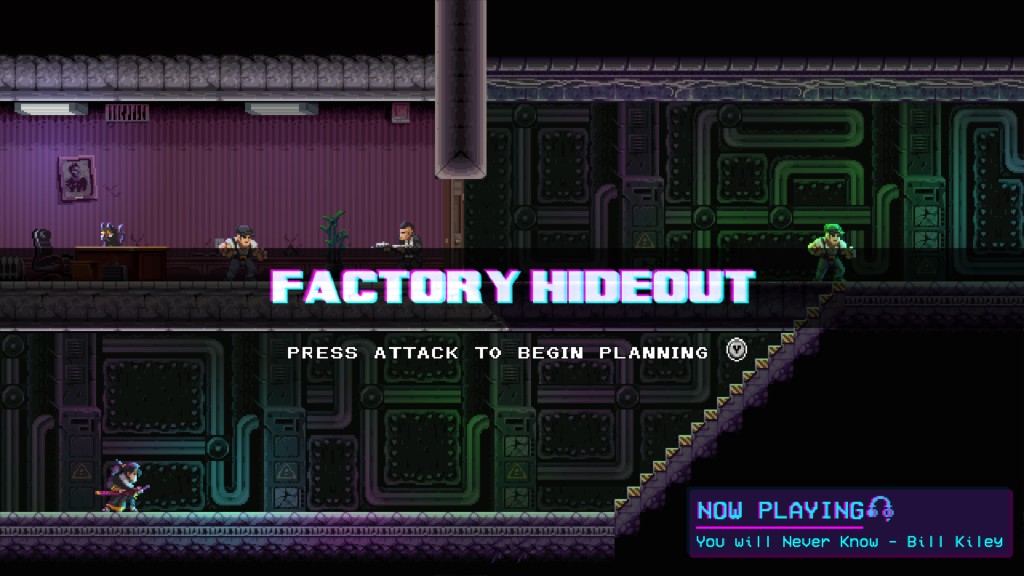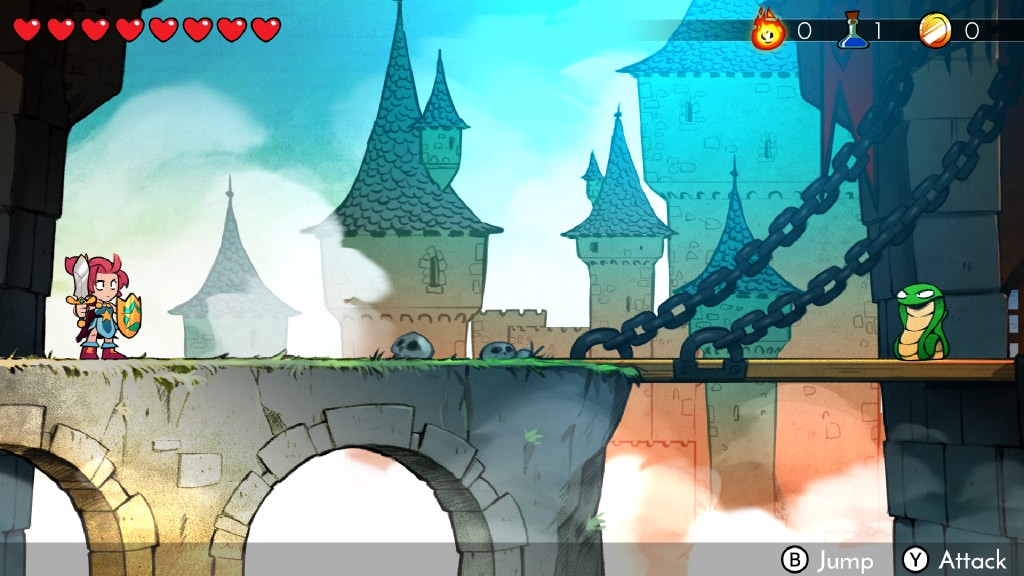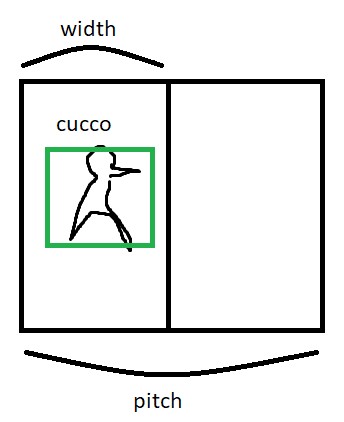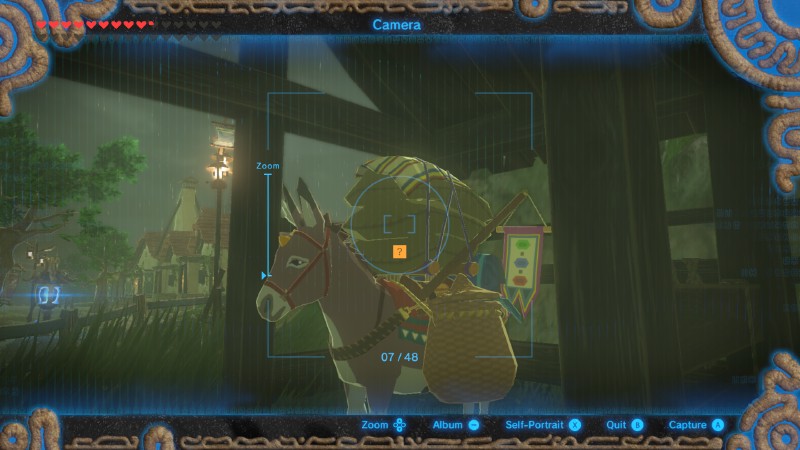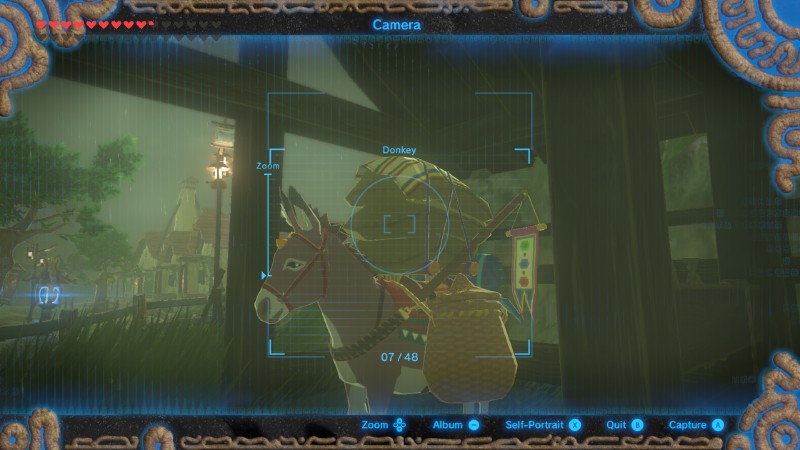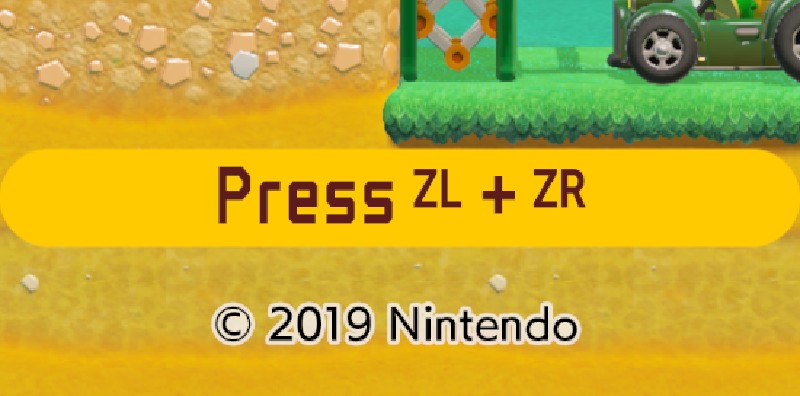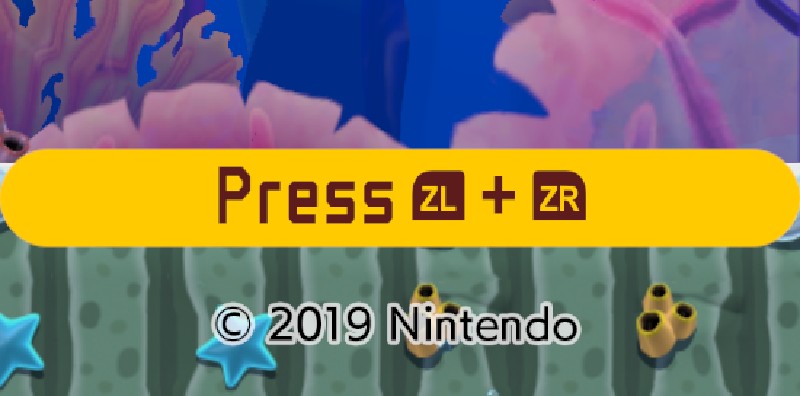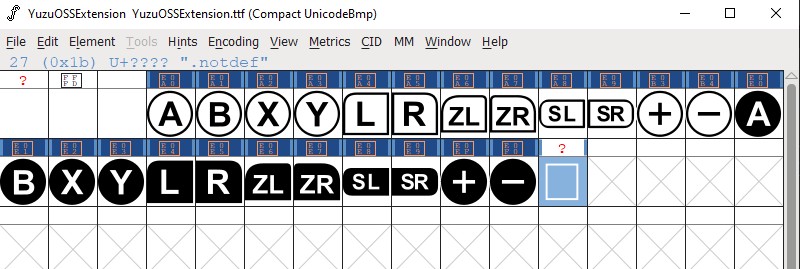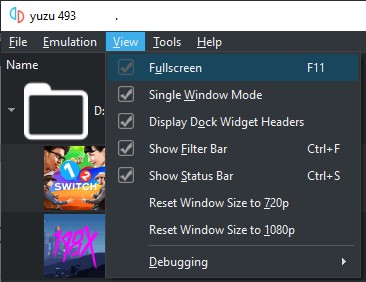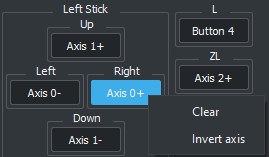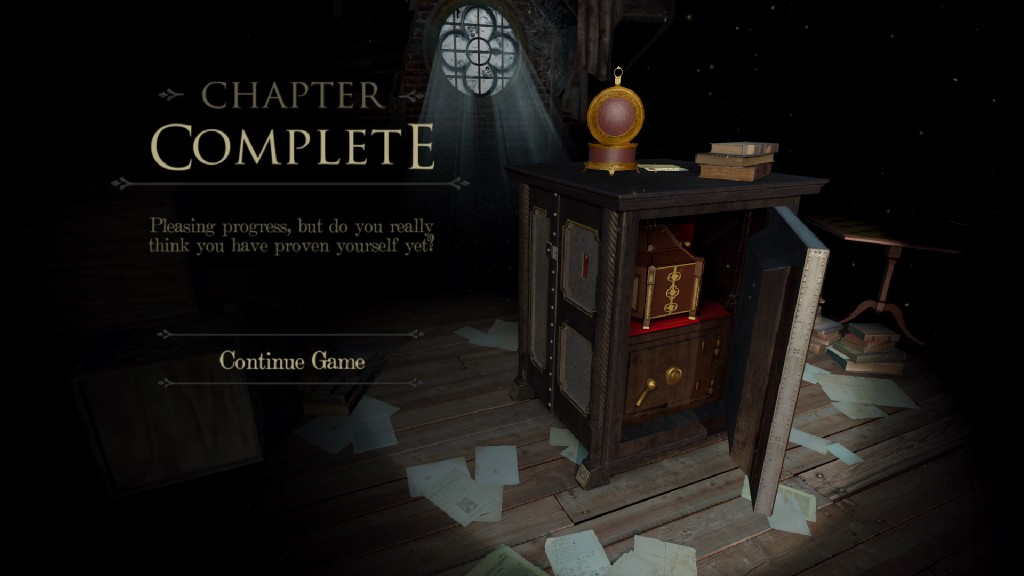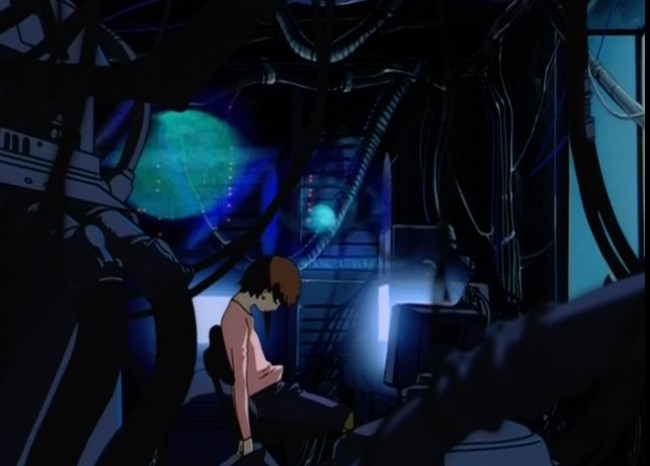Happy New Year, dear yuz-ers! 2020 is finally behind us, so what better way to start 2021 than with a progress report? Follow us for a summary of the last changes yuzu saw in 2020, and a small preview of what will come. This time we offer you kernel changes, new input and user interface additions, and the first changes applied to get the Buffer Cache Rewrite finished.
General improvements and bug fixes
epicboy has been busy squashing bugs, in this case killing two with one PR. In some instances, we were trying to read data from an nvflinger buffer before it even existed. By adding a check addressing this, Yoshi’s Crafted World now boots, albeit with several graphical glitches.
This PR also fixes how buffers are accessed, so several games now boot for the first time. Some examples include: Katana ZERO, DELTARUNE Chapter 1, Dragon Ball FighterZ and Wonder Boy: The Dragon’s Trap.
A PSA for our Intel graphics users. With the release of the Windows driver version 27.20.100.9126, Intel added support for not only the much needed VK_EXT_robustness2, but also VK_EXT_custom_border_color, improving performance and stability with the former extension and solving rendering issues in The Legend of Zelda: Breath of the Wild with the latter. Nothing better than free improvements for our integrated graphics crew running Vulkan. Latest is best!
Linux distributions compatibility, and the dependency issues that come with it, have been a long standing problem for our tuxedo-wearing users… Until now.
Thanks to toastUnlimited, we now provide AppImage builds, simplifying the installation process considerably. AppImages eliminate the dreaded dependencies issues, and bringing back support for Ubuntu 18.04, Debian Buster, CentOS 8, and many older distributions.
In the future, Early Access will finally be able to be distributed pre-compiled like this, the promise has been made. Thanks to the reduced source code compilation work hours, the CPU Union approves of this change.
During the time the Texture Cache Rewrite spent in Early Access, several regressions have been fixed. One of the notorious ones is related to the camera rune in The Legend of Zelda: Breath of the Wild.
As you can clearly see with Rodrigo’s… art, the game informs two different size values for the same texture, named pitch and width, so yuzu didn’t transfer needed information between them as it considered them different textures. By changing this behaviour, entities like animals, flowers, enemies, etc. are properly registered by the camera now.
Tony, get the boulder (The Legend of Zelda: Breath of the Wild)
There were some crashes when exiting yuzu that was related to the telemetry process. Tobi ported a fix from Citra that changes the type of AddField to a string, squashing one bug down.
A commonly reported issue was that configuration changes are lost if yuzu crashes. toastUnlimited changed this behaviour to simply save the current settings before booting a game. This change saves several headaches.
Morph implemented the new OSS fonts that Rei put together. With this, users no longer require to dump the Switch firmware to get proper button fonts. The firmware dumping process is still needed for games that have Mii related content.
It’s far cleaner to have ZL and ZR as a trigger button, than just the letters alone, don’t you agree? (Super Mario Maker 2)
A separate PR added +/- to the fonts.
THE anime swordsman (Super Smash Bros. Ultimate)
Some games report the wrong device handle when sending vibration signals, like NEKOPARA Vol. 3 (don’t Google this series). Morph fixed this by validating the device handles before use. Man of culture.
Kernel Rewrites
yuzu’s kernel received important changes this month, focused on refactoring the code for thread management and synchronization. bunnei started working on these changes two months ago, as covered on the previous progress report. Although a bit technical, these modifications are essential for accurate Nintendo Switch emulation. They also improve yuzu’s code quality and make it easier to work with. There are still many changes planned for the kernel, so stay tuned for even more improvements in the very near future.
First, there is an improvement to yuzu ensuring safe memory access across threads. A Race Condition happens when multiple threads are running simultaneously, and one thread modifies data while another thread accesses it. Race conditions can cause faulty or unexpected behaviour: a thread can retrieve partial data or even overwrite changes made by another. yuzu emulates the Nintendo Switch’s internal memory using a type of abstract data structure called a Page Table, which works as a virtual layer between the physical and the emulated memory. It maps these addresses in a “contiguous table” that lets the programmer access memory easily without checking where actual memory stores everything. Most memory management operations were written before multicore CPU and asynchronous GPU were implemented. There was only a single thread back then, so there were no guards for thread-safe memory access. bunnei introduced a lock in this PR to alleviate a race condition where the data in the memory pages was being accessed while the GPU was operating on them.
bunnei has also been rewriting the kernel scheduler. Modern operating systems run many processes simultaneously, however, a single CPU core can only process one of them at any given time. The scheduler is an essential piece of the kernel, as it is in charge of swapping CPU access to the different processes and choosing in which order this happens. This will make yuzu’s kernel match Horizon OS more closely.
As a follow-up to this rewrite, bunnei reworked the way service calls were implemented in yuzu, by allocating their calls in their own individual service threads. Many services are running in the background on the Nintendo Switch. They are in charge of initializing and managing specific tasks, such as audio, graphics, user input, networking, etc. yuzu emulates these services through HLE - High Level Emulation. This means that, instead of dumping the binary code of these routines from the Nintendo Switch and translating their instructions so that a PC can run them, the programmer reimplements the functionality of these services in C++. Thus, HLE works like a “black box”: these services are called whenever there’s a request from the games, and they send (or ask) for the corresponding data, even though internally they may be different to how the service was originally implemented in hardware. But, as long as the information requested or sent through the service is valid and processed appropriately, the system is being emulated correctly.
These service processes are independent of each other, so games call them asynchronously. But before this PR, all of these services were being processed in the CoreTiming thread – a thread that is used to process events at certain times in the future (for example, when a frame completes rendering). This meant that games would call these processes, but they would not be processed until the CoreTiming thread was run, which resulted in these requests piling up in a queue and possibly introducing lag if the queue wasn’t emptied fast enough.
Thanks to the changes in this PR, each of these processes was moved to their own thread and is processed more quickly. An immediate benefit of this change is that load times improve significantly, and input lag is also reduced. But another important perk is that this implementation is more accurate, as it resembles the behaviour of services in the Nintendo Switch. GPU emulation also runs on its own thread now, which is synchronized on GPU pushes and flushes. This means that async GPU can be decoupled from multicore and these settings can now be toggled independently from each other.
Finally, as a continuation to the previous two PRs, comes the rewrite of the kernel synchronization primitives – namely, Synchronization Objects, Condition Variables and Address Arbiters. An in-depth explanation of how these mechanisms work goes beyond the scope of this report, but essentially they are tools used by threads in different processes to communicate with each other and be synchronized properly. The major benefit of these changes is that a lot of code that was being carried over from Citra (and that required major workarounds to make it function properly with multicore) has been changed in favour of mechanisms more appropriate for how yuzu works, besides making it closer to how the Horizon OS of the Nintendo Switch works.
Going in hand with these synchronization changes, epicboy introduced a PR to incorporate a syncpoint manager for nvdec. This utilizes the tools mentioned previously to implement a more accurate GPU-CPU synchronization mechanism. It is crucial to avoid race conditions when async operations are being performed by the emulator when decoding a video.
UI changes
Finally, a very needed User Interface change, language support is here. Thanks to work done by Tobi and many, many members of the community from around the globe, we can now offer support for 11 different languages, plus regional variations. ¡Muchas gracias!
Anyone is welcome to help expand the available language list.
For our command-line or shortcut lovers, Morph adds command-line arguments. Current options are:
yuzu.exe "path_to_game"- Launches a game atpath_to_game.yuzu.exe -f- Launches the next game in fullscreen.yuzu.exe -g "path_to_game"- Launches a game atpath_to_game.yuzu.exe -f -g "path_to_game"- Launches a game atpath_to_gamein fullscreen.
Feel free to create desktop shortcuts of all of your games!
Thinking of our fast typers, toastUnlimited added several menubar access hot-keys. Now, for example, a user can press Alt + F, R, ENTER to load the most recently played game. Look Ma! No mouse!
german77 added the option to resize yuzu’s window to 1920x1080, on top of the traditional 1280x720. This ensures a perfect 1:1 pixel ratio with native 1080p games while playing windowed, for those with high-resolution displays.
Input changes
german77 is back in action with a couple of input improvements.
Adding a way to invert an analog stick axis was a problem we did not expect to have on Xbox and PlayStation controllers, but some alternative brands don’t seem to follow the specifications very closely. Now if you right-click on an axis, you get the option to invert it.
This is also a great way to invert a camera if a game doesn’t allow it in its own settings, for example in Star Wars Jedi Knight II: Jedi Outcast.
Analog triggers were sometimes mapped inverted to what the user intended. As a way to avoid some bad moments to our users, now the program takes two samples when mapping an analog trigger, to better determine the direction of movement. This was ported from Citra, so thanks, guys!
A few games like Voez and The Room require specific touch gestures, and to achieve that, multitouch support was added. With this, yuzu now offers support for up to 16 touch inputs with the keyboard, touch screen or via UDP services.
Preliminary work for the Buffer Cache Rewrite
While we sadly couldn’t give you a Christmas present in the form of the Buffer Cache Rewrite (or BCR for short), the preliminary work needed to have it ready has started. Rodrigo has his hands full with cleaning up the TCR recently merged into Mainline, the current internal work and testing on the BCR, and his first steps with Project Hades. “Sleep is for the weak” indeed.
We will go in-depth once BCR is completed, but one of the required features is having access to Vulkan at all times to make use of interop, a driver feature (or as Rodrigo calls it, a monstrosity) that allows developers to cross-code between different graphics APIs on Nvidia and AMD products. This way, Vulkan can be used from OpenGL if it offers a better solution to a problem.
A rather interesting change needed is related to Dynarmic. By masking data in three lower pointer bits before reading them, Rodrigo can now store required information of the page tables without needing to use a lock, saving precious execution time and, at most, some 128MB of system memory.
Lastly, additional granularity in the CPU pages. This PR allows informing if the CPU or the GPU modified a range of data in the CPU page. If the relevant range was modified by the CPU, it must be uploaded to the GPU. Processors supporting the BMI1 instruction set will get a slim performance improvement, these include Intel Haswell (Gen. 4) or newer, and AMD Piledriver (2nd Gen. FX)/Jaguar or newer.
Future projects
It’s no surprise, but the Buffer Cache Rewrite is close to release. Vulkan performance and stability improvements are planned, with kernel improvements continuing to be a high priority.
Plus we also have some other interesting things we’ll reveal later on.
That’s all folks! Thank you so much for sticking around. See you next time in the January progress report! Take care and stay safe! Thanks to Darkerm and Morph for helping with the pictures.
Please consider supporting us on Patreon!
If you would like to contribute to this project, check out our GitHub!
Advertisement
Advertisement
